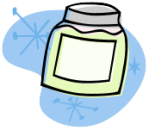 Maintaining a slightly damp, rather than dry, environment under a dressing has been shown in many studies to help wounds heal faster. Moisture prevents a scab from forming, which allows new epithelium cells to move across the surface of the wound more quickly, and reduces the time it takes it to close1.
Maintaining a slightly damp, rather than dry, environment under a dressing has been shown in many studies to help wounds heal faster. Moisture prevents a scab from forming, which allows new epithelium cells to move across the surface of the wound more quickly, and reduces the time it takes it to close1.
As the technique appears to improve the healing rates of a range of skin lesions2, it has been suggested that its benefits may extend to cracked nipples3, and there are now several off-the-shelf creams and dressings that claim to maintain a moist environment, and thus help the healing process. The inference is not, at first glance, unreasonable – if moisture helps skin to regenerate more quickly, then it may well help injured nipples to recover too. It is important to remember, however, that nipples are subject to a unique set of circumstances when a mother is breastfeeding, so it is also quite possible that the application of the technique might not be appropriate. Is there any scientific evidence that applying moist wound healing principles can aid the recovery of cracked or injured nipples?
In a study comparing dressings made from hydrogel with lanolin (both classified by the Breastfeeding Network as having ‘moist wound healing’ properties)4, 106 mothers were allocated at random to one of two groups: the first was given hydrogel dressings to use between feeds; the second was given lanolin cream. Mothers started using the treatments within 24 hours of giving birth, and their effectiveness was assessed via telephone interviews 3, 4 or 5, 7, 10 and 12 days later. The researchers found mothers reported significantly lower pain scores (a difference of just under 1 point, on a scale of 1-5) in the hydrogel group on days 10 and 12.
There were a couple of problems with this study (actually, there were several, but I’ll limit it to the major ones). Firstly, there was no baseline group of mothers not applying anything to their nipples, so it is not possible to say whether either treatment was better than simply leaving nipples alone. A second issue is that the people conducting the interview were aware, when they spoke to the participants, which treatment they were receiving. The researchers claim that to have conducted the study blind would have been ‘impossible’, an unsubstantiated and somewhat odd statement, as it would appear to be completely possible to interview a mother over the phone without knowing what she had on her nipples. Knowledge of the treatment group in this type of study is a problem if there is any chance that the researcher may have a bias towards a particular treatment, as they may subconsciously influence the patients’ responses. It may be worth mentioning at this point that the research was funded by Tyco, the manufacturers of the dressings.
These criticisms are, however, a digression. The main thing to note about this research is that it did not test whether the dressings actually helped wounds to heal. Although moist wound healing is touted in the introduction as the ‘science bit’ justifying the use of the dressings, it is not mentioned anywhere in the procedure or the results.
A hospital-funded study comparing hydrogel and lanolin – this time documenting the impact that the treatments had on bleeding and cracked nipples – did not find the dressings to be quite so effective5. Researchers who were blind to the treatment group rated nipples as healing significantly better when women used lanolin with breast shells, rather than hydrogel dressings. Self-reported measures of pain were also significantly lower in the lanolin group. A final point worth mentioning is that the study was halted early, due to a third of the 21 women in the hydrogel dressing group developing an infection.
Although this study compared two treatments, it is again compromised by the lack of a proper control group. We can see that lanolin appears to result in improved healing and lower pain scores when it is compared with hydrogel, but we still do not have any evidence that moist wound healing techniques are useful for treating injured nipples when breastfeeding – to ascertain this requires a control group where mothers keep their nipples dry.
So far, there appear to be only two studies that have looked at this issue. An experiment published in 1995 examined whether using a polyethylene adhesive dressing had any effect on the development of nipple redness, fissures and pain6. 50 mothers took part in the study, using a dressing on one nipple, and leaving the other untreated. Although the mothers reported less pain when feeding with the treated nipples, the researchers caution that this may simply have been because of the ‘Hawthorne Effect’ (the mere fact there is an intervention is enough to cause an improvement.) The dressings made no difference to the development or healing of fissures or redness, as reported by observers blind to the treatment group. 16% of the participants dropped out due to finding the dressings uncomfortable, and 66% said they found it uncomfortable to remove them – something they had to do before every feed.
A more recent study looked specifically at the effect of lanolin on the healing of nipple fissures7. 225 women, all with fissures, were randomly allocated to one of three groups: in the first group mothers applied lanolin 3 times a day; in the second they applied breast milk after each feed; in the third they applied nothing. The appearance of their nipples was assessed 3, 5, 7 and 10 days after starting the treatment by researchers who did not know which group the mothers were assigned to. There was no significant difference in healing time between the breast milk and no-treatment groups. The nipples of the women using lanolin, however, took significantly longer to heal (45% of this group took longer than 7 days, as opposed to 32% of the milk group, and 25% of the no-treatment group).
There is another area of research, which does not examine the use of moist wound healing directly, but is still relevant to the debate. Broken skin makes nipples vulnerable to infection8, which may mean there is an additional problem with keeping nipples damp, rather than dry: organisms like thrush are known to thrive in warm, moist environments9.
Given the possible risk of infection, and the evidence that maintaining a moist environment around cracked nipples may potentially delay the healing process, it seems to unwise to recommend the application of the products described above to mothers with cracked or fissured nipples. In spite of this, they continue to be promoted by both commercial companies and health professionals on scientific grounds. Until evidence that genuinely supports its use is found, presenting moist wound healing to mothers as a clinically tested treatment is at best misguided, and at worst dishonest.
- Nature. 1962 Jan 20;193:293-4.
- Br J Nurs. 2008 Aug 14-Sep 10;17(15):S4, S6, S8 passim.
- J Hum Lact. 1997 Dec;13(4):313-8.
- J Obstet Gynecol Neonatal Nurs. 2003 Jul-Aug;32(4):486-94.
- Arch Pediatr Adolesc Med. 1998 Nov;152(11):1077-82.
- Nurs Res. 1995 Nov-Dec;44(6):347-51
- Saudi Med J. 2005 Aug;26(8):1231-4
- J Hum Lact. 1991 Dec;7(4):177-81.
- Hum Lact. 1999 Dec;15(4):281-8.
 I sometimes feel as if I’ve experienced pretty much every breastfeeding problem going: sore/bleeding/fissured nipples; mastitis (although fortunately only the early stages); not enough milk; too much milk; and a very temperamental let-down reflex. One of the only things I haven’t suffered from is thrush – a fungal or yeast (candida) infection that allegedly causes excruciating nipple and breast pain. I use the word ‘allegedly’ simply because it is not always easy to determine whether the symptoms associated with thrush are definitely caused by a fungal infection, or whether they are in fact down to something else. I am not a thrush doubter – I think there is sufficient evidence to justify taking it very seriously, as does the NHS. Many health professionals who do not specialize in breastfeeding are yet to be convinced, however, as the Mumsnet discussions below testify:
I sometimes feel as if I’ve experienced pretty much every breastfeeding problem going: sore/bleeding/fissured nipples; mastitis (although fortunately only the early stages); not enough milk; too much milk; and a very temperamental let-down reflex. One of the only things I haven’t suffered from is thrush – a fungal or yeast (candida) infection that allegedly causes excruciating nipple and breast pain. I use the word ‘allegedly’ simply because it is not always easy to determine whether the symptoms associated with thrush are definitely caused by a fungal infection, or whether they are in fact down to something else. I am not a thrush doubter – I think there is sufficient evidence to justify taking it very seriously, as does the NHS. Many health professionals who do not specialize in breastfeeding are yet to be convinced, however, as the Mumsnet discussions below testify: In the
In the  When C was 6 months old, I had to go back to work. Although I was returning full time (a part time position in my job would mean working full time for a lower salary), I was able to spend two days a week working from home. C would go to nursery while I was in the office, and I would juggle her and my job the rest of the time. (I say ‘the rest of the time’ rather than ‘the other two days’ as this kind of arrangement inevitably spills over into evenings and weekends.)
When C was 6 months old, I had to go back to work. Although I was returning full time (a part time position in my job would mean working full time for a lower salary), I was able to spend two days a week working from home. C would go to nursery while I was in the office, and I would juggle her and my job the rest of the time. (I say ‘the rest of the time’ rather than ‘the other two days’ as this kind of arrangement inevitably spills over into evenings and weekends.) Maintaining a slightly damp, rather than dry, environment under a dressing has been shown in many studies to help wounds heal faster. Moisture prevents a scab from forming, which allows new
Maintaining a slightly damp, rather than dry, environment under a dressing has been shown in many studies to help wounds heal faster. Moisture prevents a scab from forming, which allows new 